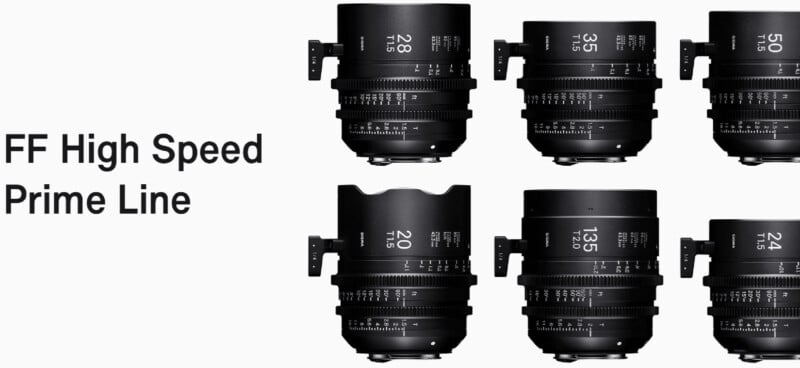![]()
Sigma may be best known for its photographic lenses, but the company’s video-specific Cine lenses are very well regarded in the industry. So much so, in fact, that the Giant Screen Cinema Association (GSCA) has selected Sigma Cine lenses as its new standardized test lens.
Since 2014, the GSCA has compared modern digital cameras against each other in real-world situations to help filmmakers determine the best cameras for big-screen cinematic work. The Camera Assessment Test (CAT) is designed to provide GSCA members and other filmmakers with actionable information they can use when creating movies.
The GSCA supports and sustains the international network of giant screen theaters and helps content creators deliver high-quality content. The GSCA’s membership includes more than 200 organizations in over 20 countries, including museums, science centers, and other institutions.
In the latest round of testing, which includes only 8K capable cameras, save for the Arri Alexa 35, which shoots at 4.6K resolution, the GSCA considered sensor size and resolution, color space, compression, dynamic range, Log space, RAW image capture, lens mount, recording media, usability, reliability, flexibility, and camera system support.

The selected cameras include the Arri Alexa 35, plus the Canon EOS R5C, Kinefinity MAVO Edge 8K, RED V Raptor XL, Sony a1, and the Sony Venice 2, running the gamut from mirrorless interchangeable lens cameras photographers are familiar with to specific cinema-oriented video cameras.
As part of the evaluation process, all cameras are set to similar settings and tested in identical scenes. They also must be shot using a standardized lens to ensure the best results and most useful data. In this case, the GSCA picked Sigma Cine Lenses for “their exceptional corner-to-corner sharpness” and full-frame sensor coverage. “It was felt that the evaluation required lenses that provided sharp, clean, crisp images while being as ‘neutral’ as possible,” the GSCA explains in a technical white paper.

The specific Sigma Cine lenses were selected so each camera had a similar field of view as the classic IMAX 40mm lens. Given that different tested cameras have different image sensor sizes and aspect ratios, the GSCA used Sigma 14mm, 20mm, 40mm, 50mm, 65mm, and 120mm cinema lenses, with the 65mm T1.5 FF Cine Prime used as the primary test lens and other lenses used for testing different scenarios.
“We are honored that the GSCA selected the Sigma 65mm T1.5 FF Cine Prime as the benchmark lens to assess these leading Cine cameras in the most demanding real-world situations,” says Mark Amir-Hamzeh, President of Sigma America. “This demonstrates Sigma’s dedication to crafting exceptionally high-performing lenses for filmmaking.”
Sigma Cine lenses have been used on significant motion picture projects including Top Gun: Maverick, Sound of Metal, Monster Island, and many more. The lenses have also been used to shoot television series like Mindhunter, The Tick, and Sneaky Pete.
